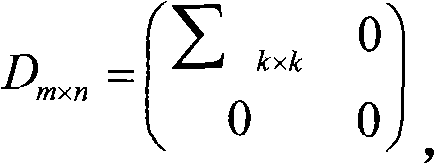A Distributed Image Feature Extraction Algorithm Suitable for Collaborative Learning
An image feature extraction and distributed technology, applied in image enhancement, image data processing, computing, etc., can solve problems such as no retrieval scheme proposed, no in-depth research, and cumbersome construction of scale invariance
- Summary
- Abstract
- Description
- Claims
- Application Information
AI Technical Summary
Problems solved by technology
Method used
Image
Examples
Embodiment Construction
[0040] In order to make the technical means, creative features and objectives of the present invention easy to understand, the present invention will be further elaborated below in conjunction with specific examples
[0041] A distributed image feature extraction algorithm suitable for cooperative learning described in the present invention, the algorithm is based on Radon transform and singular value decomposition, and according to the geometric characteristics of Radon transform, a new invariant texture feature extraction based on Radon transform and wavelet transform is constructed The method makes full use of the anti-noise ability of Radon transform, and this feature has translation, rotation and scale invariance at the same time.
[0042] The present invention first extracts the original image edge contour according to the principle of wavelet modulus maxima, constructs the central moment of Radon transformation for the edge image, obtains translation invariance, and then...
PUM
 Login to View More
Login to View More Abstract
Description
Claims
Application Information
 Login to View More
Login to View More - R&D
- Intellectual Property
- Life Sciences
- Materials
- Tech Scout
- Unparalleled Data Quality
- Higher Quality Content
- 60% Fewer Hallucinations
Browse by: Latest US Patents, China's latest patents, Technical Efficacy Thesaurus, Application Domain, Technology Topic, Popular Technical Reports.
© 2025 PatSnap. All rights reserved.Legal|Privacy policy|Modern Slavery Act Transparency Statement|Sitemap|About US| Contact US: help@patsnap.com



